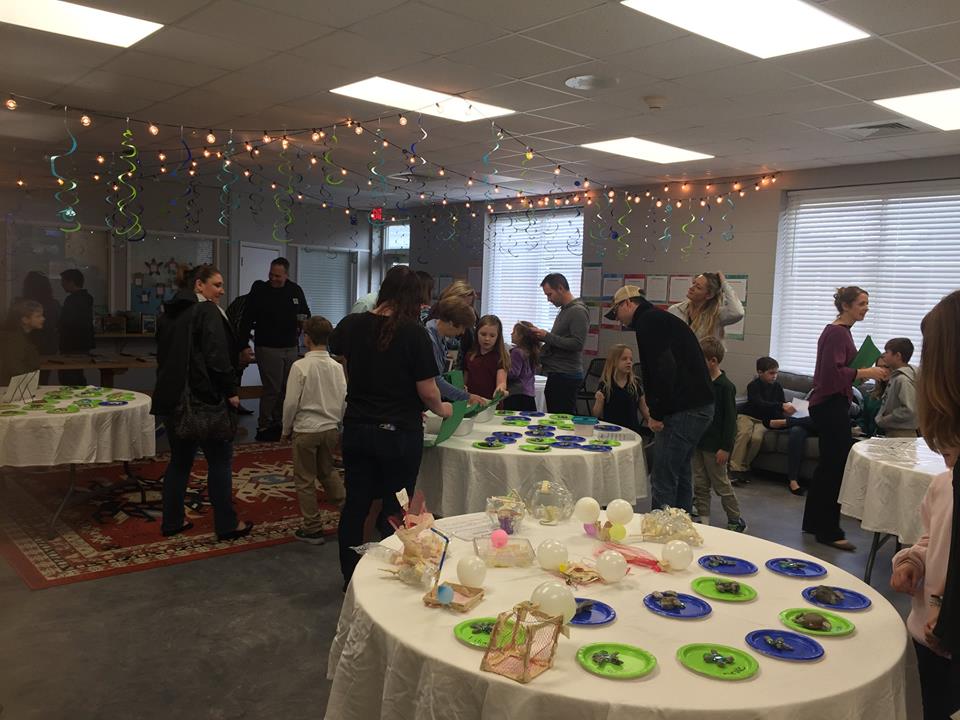Six Weeks In Second Grade
 ?”Sooooooo happy together!”?Can you name the band that sang that tune? It’s not the Beatles and it’s not the Monkees! If you guessed The Turtles from the 70s, well done! This happy tune was the anthem to our first ever unit study in 2nd grade which was all about….turtles! Sea turtles to be exact. 2nd grade launched a formal unit study at the start of January with the goal of incorporating experiential learning, Charlotte Mason, and Classical Education all under an umbrella of Biblical integration. The outcome was 6 weeks of experiences and learning that the students and teachers are sure to never forget.
?”Sooooooo happy together!”?Can you name the band that sang that tune? It’s not the Beatles and it’s not the Monkees! If you guessed The Turtles from the 70s, well done! This happy tune was the anthem to our first ever unit study in 2nd grade which was all about….turtles! Sea turtles to be exact. 2nd grade launched a formal unit study at the start of January with the goal of incorporating experiential learning, Charlotte Mason, and Classical Education all under an umbrella of Biblical integration. The outcome was 6 weeks of experiences and learning that the students and teachers are sure to never forget.
What was studied in the STEM education experience?
The unit study focused on God’s beautiful design of sea turtles, the habitat, migration habits, characteristics, key vocabulary, and conservation efforts all surrounding this graceful and majestic creature. At the root of the students’ learning was a bountiful supply of rich literature. The teachers collected books from local libraries, the MGCS school library, and Amazon that were read each day during unit study time. 2nd grade students were exposed to over 35 different pieces of literature encompassing 11 different genre types. They read Native American fables, Greek mythology, poetry books, non-fiction, and realistic fiction to name a few. Each piece of rich literature carried them deeper into their understanding of sea turtles.
Collaboration was a central thread throughout this unit study for the students and for the teachers. The students often joined forces together in one classroom to watch sea turtle videos, work collaboratively on research projects, and design sea turtle paintings. The 2nd grade teachers reached out to the enrichment teachers to join them in their 6 week study. The librarian shared sea turtle books during Library, the Spanish teacher taught turtle body parts in Spanish, and the PE teacher played sea turtle ‘tag’ games that involved predators and prey. Ms. Pray, the art teacher, introduced the students to George Seurat and the style of painting called pointillism. Students then took this knowledge and used it in their homeroom class to draw and design a sea turtle using pointillism.
How does MGCS incorporate STEM education?
A key component to the teacher collaboration efforts was the partnership with Mrs. Pleasant, the STEM Coordinator. Students visited the STEM lab with their teachers and took part in lessons dissecting a faux turtle stomach, designing turtles out of natural elements, and creating a feeding cage for a turtle using materials they purchased with pretend STEM lab money. Feeding cages were even tested in the robotics pool on campus for their effectiveness. A highlight of the STEM experience was the field experience at Fort Fisher Aquarium. Students took part in a one hour lesson on sea turtles and reptiles. They also went on an hour long scavenger hunt that traveled through the entire aquarium, making time to stop and meet Sheldon, the aquarium’s famous Green Sea Turtle.
How did the students display their work?
At the end of the six week study, students were ready to share their learning in a culminating event called the 2nd Grade Sea Turtle Showcase. The Youth Room was decorated with written reflections, informative paragraphs, student written fables, clay sea turtles, STEM feeding cages, sea turtle student paintings, and more. The students and teachers felt immense pride in displaying all the learning that had taken place throughout the unit study. Parents were invited in to tour the showcase led by their own children. There has been a strong sense of community felt among the students and the teachers involved in this study as they have all worked alongside each other; an outcome that has surpassed all expectations. The team is already planning its next unit study and can’t wait to jump right in!
